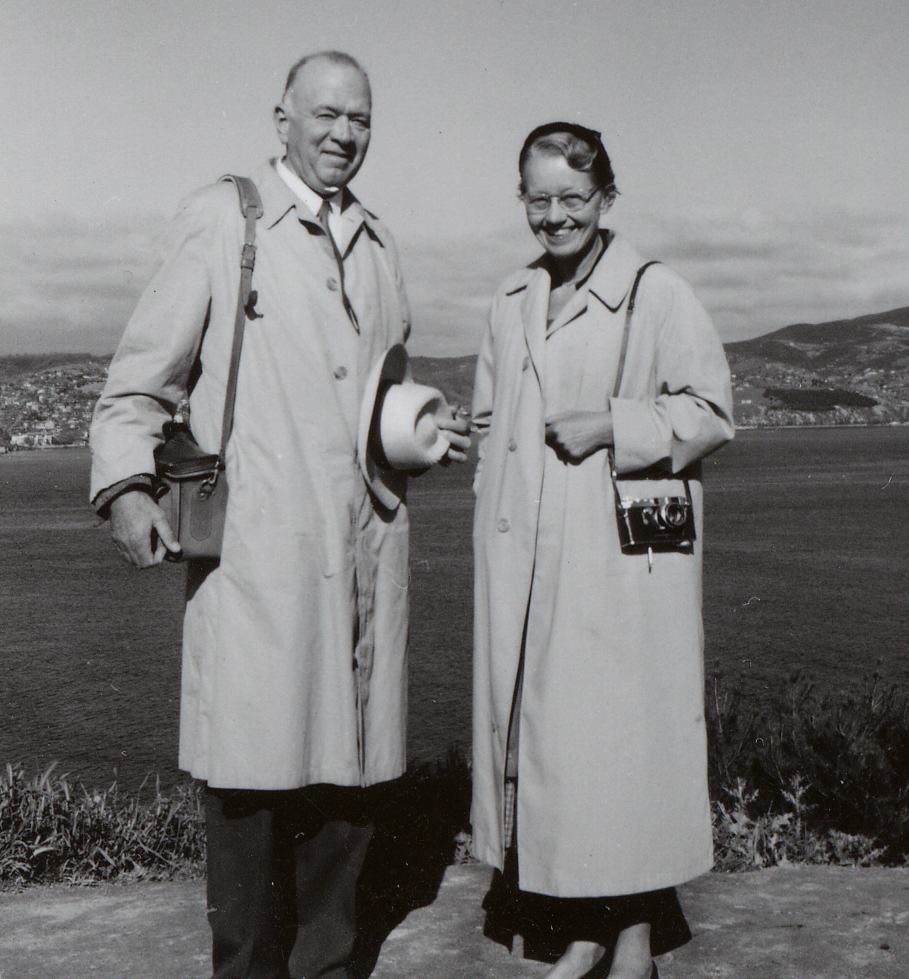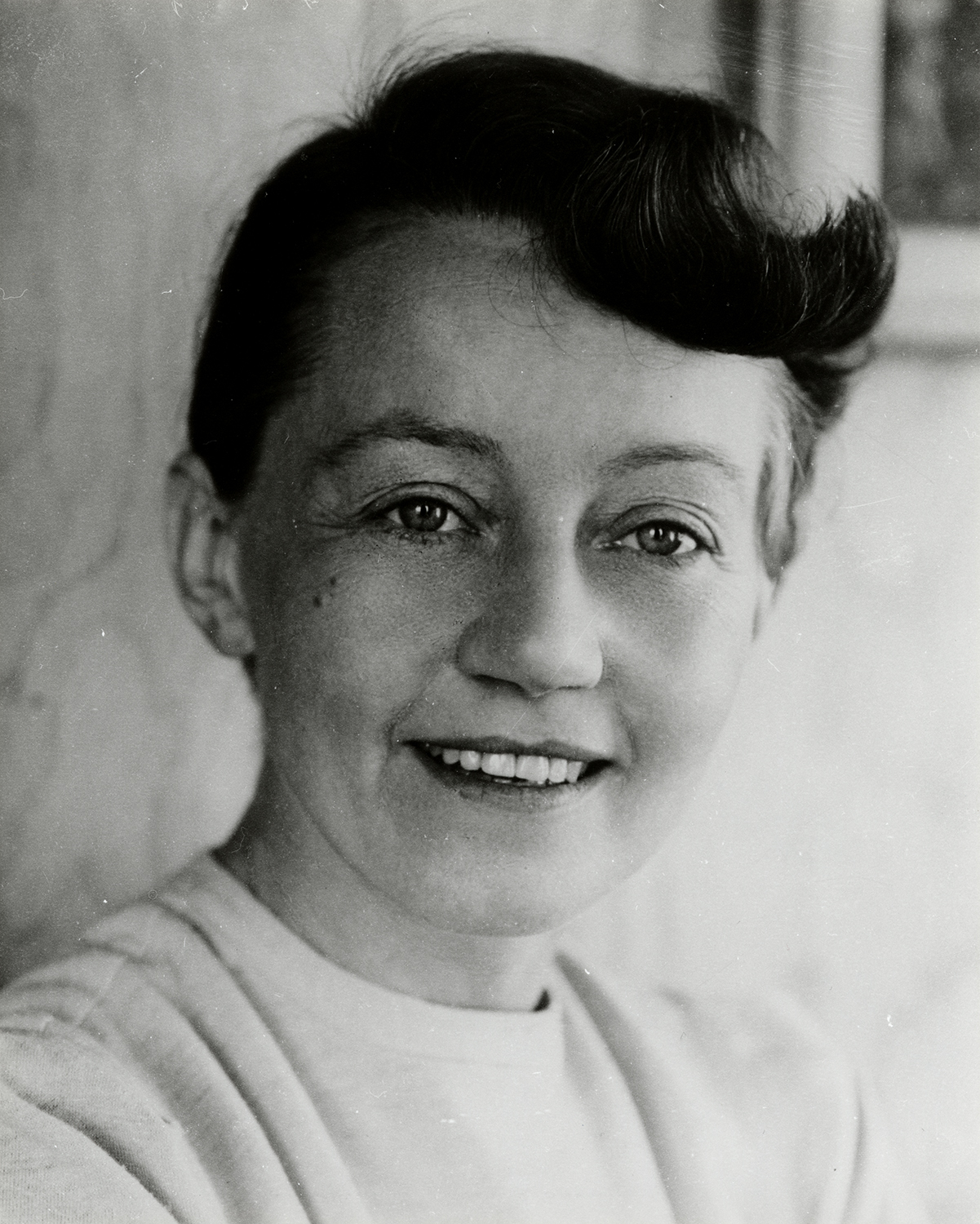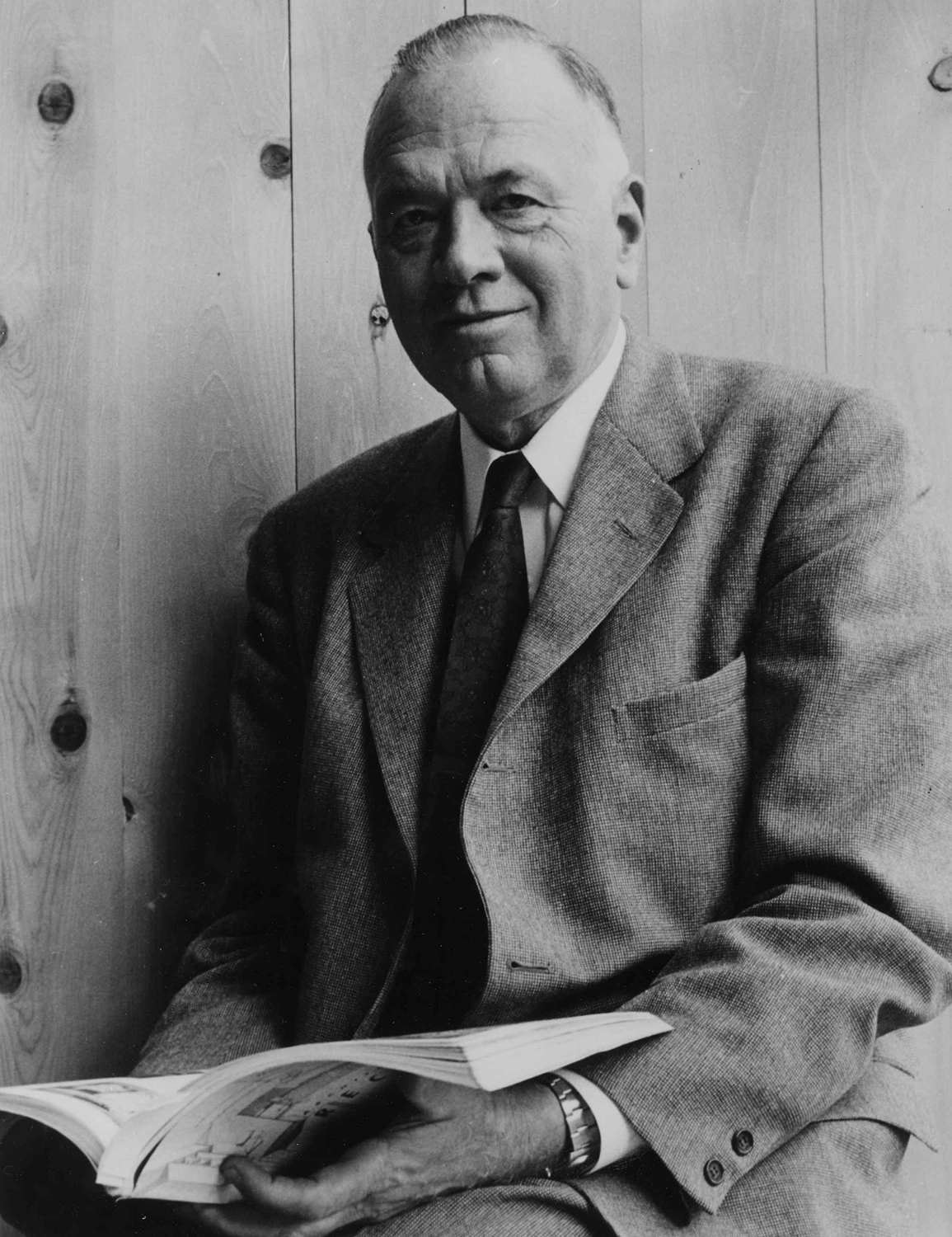William Wilson Wurster (1895-1973) & Catherine Bauer Wurster (1905-1964)
William Wilson Wurster, born in California in 1895, earned his degree in architecture from the University of California, Berkeley, in 1919. After obtaining his license in 1922, he worked briefly for firms in Sacramento and with Delano & Aldrich in New York, then opened the firm William W. Wurster in California in 1924. He gained national recognition early in his career with an award-winning design for the Gregory farmhouse (Scotts Valley, 1927), and became the most well-known modernist architect in the Bay Area.
Catherine Krouse Bauer Wurster was born in Elizabeth, New Jersey in 1905. She attended Vail-Deane School and then Vassar College. In her junior year she transferred to the School of Architecture at Cornell University, but returned to Vassar to graduate in 1926. The next few years were devoted to research and writing about housing and city planning and travel abroad to study European housing. She served as executive secretary of the Regional Planning Association of America, of the Labor Housing Conference, and of the Housing Committee of the American Federation of Labor, and wrote her now classic 1934 book Modern Housing.
In January, 1940, Catherine came to the University of California at Berkeley as Rosenberg Lecturer in Public Social Services and in August of that year was married to William Wurster. In 1943, William went to study planning at Harvard and Catherine became a lecturer in the Department of Regional Planning at Harvard University.
Both Yale and MIT invited William to teach, and by 1944 he had become Dean of Architecture at MIT, a post he held until 1950. In 1944, Wurster formed a partnership with former employee Theodore Bernardi, and with the addition of Donn Emmons, also a former employee, in 1945, the firm became Wurster, Bernardi, and Emmons (WBE).
Wurster returned to the Bay Area in 1950 to become Dean of Architecture at the University of California, Berkeley, a position he held until his retirement in 1963. In 1959 he brought the departments of architecture, landscape architecture, city and regional planning, and design together to become the College of Environmental Design. WBE incorporated in 1963 and continued to produce award-winning designs, receiving the American Institute of Architects’ Architectural Firm Award in 1965. All three partners had been named Fellows of the AIA by this time, and Wurster was later honored with the AIA Gold Medal Award for lifetime achievement in 1969.
Upon returning to the Bay Area, Catherine became a lecturer, later Professor, in the University’s Department of City and Regional Planning, a position she held until her death. During these years, she was consultant to the United Nations, travelled, wrote, and advised on housing problems in developing countries, and served as adviser to the U. S. Public Health Service, the Housing and Home Finance Agency, and the Census Bureau.
The William and Catherine Bauer Wurster Papers span the years 1914 to 1979, beginning with William Wurster’s student work and ending with post-mortem material regarding both husband and wife. The majority of the collection contains Personal Papers of the couple, particularly their photos and slides from various trips abroad, starting with William’s 1922 trip to Europe and ending with the couple’s world tours in 1957 and 1959. Accompanying these photographs are written descriptions of the trips, including William’s travel journals and their joint notes and publications regarding their experiences.


